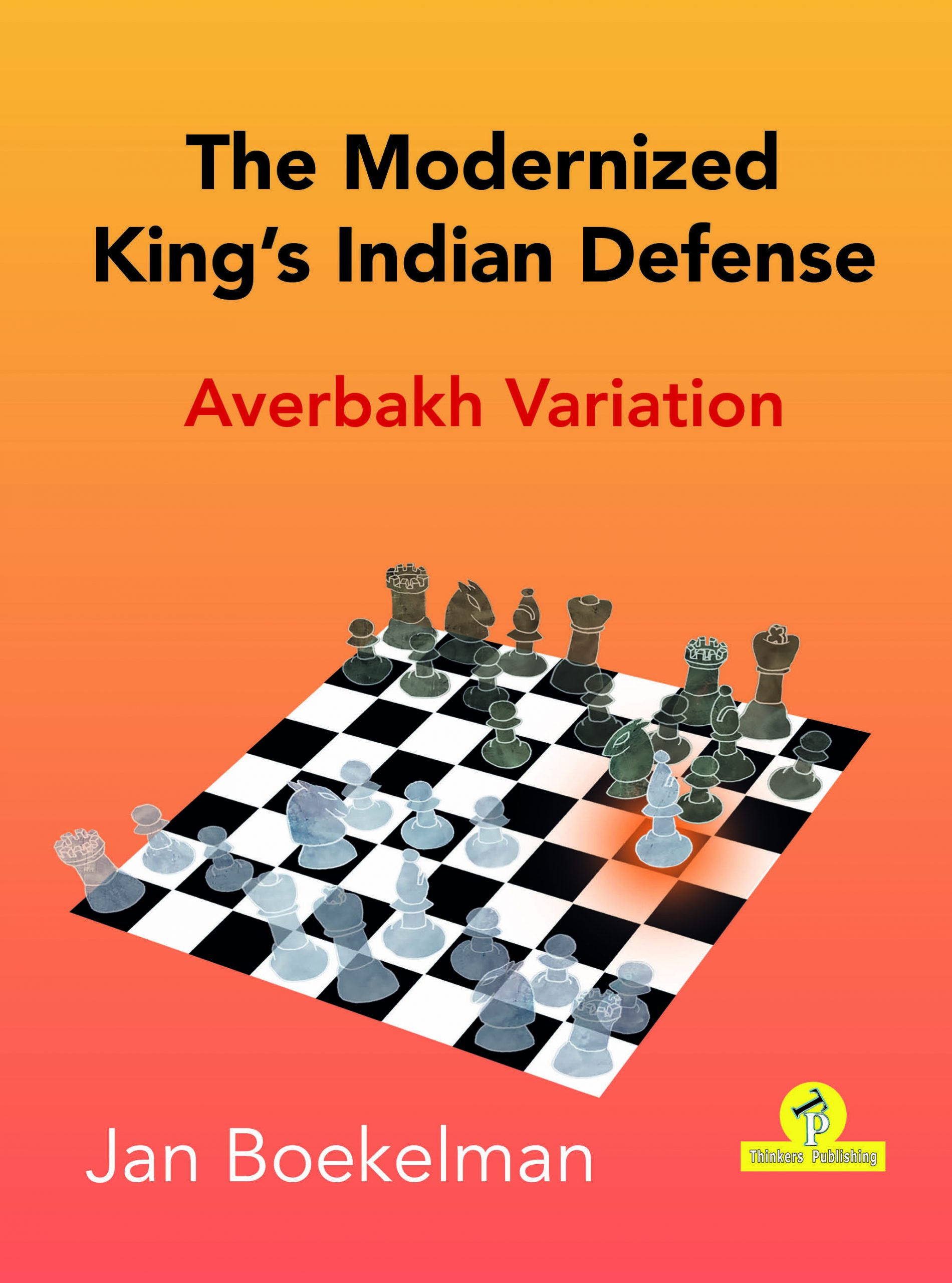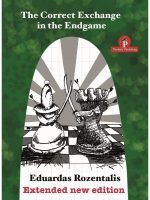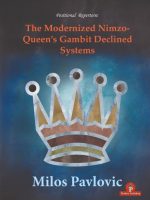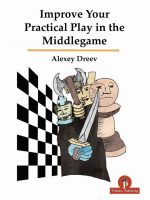Description
Jan Boekelman – The Modernized King’s Indian – Averbakh Variation – ISBN 9789464201376 – 400 pages.
Teaser [PDF] – The Modernized King’s Indian – Averbakh Variation
Welcome to the wonderful world of the Averbakh Variation against the King’s Indian Defense (KID). Who would not want to have a variation against the KID that keeps White’s position completely under control, that is positional in nature and that stays away from dark and murky waters or messy tactical situations? Many players like to play a variation against the KID that bears the hallmark of strong grandmasters and has stood the test of time. This book examines such a variation with a repertoire for White and an in-depth analysis of all of Black’s responses.
The Averbakh is a solid and respectable variation against the KID. It bears the name of the well-known Soviet grandmaster, theorist, and endgame specialist Yuri Lvovich Averbakh. He is the oldest living grandmaster who recently celebrated his 99th birthday in Moscow on 8 February. In the early 1950s, Averbakh was one of the first grandmasters to play the variation more than once. He contributed greatly to the development of its theory. Averbakh used the variation for several years, then changed course to other variations to fight the KID. Occasionally, he returned to his old love that by then bore his name.
The Averbakh Variation represents a shift in White’s approach to the fight against the KID. Rather than focusing solely on the queenside while accepting a certain danger of being checkmated on the other side of the board, as happens in the KID in many lines, White uses a strategy of positional control, in which he uses the KID in a calm, positional way. Initially, the character of the battle is indeed relatively calm and positional, but not too calm to land in near-equal positions immediately. White’s development schedules follow strategic logic. In the following parts of the game, White generally retains his first mover advantage, in positions where he retains control.
The Averbakh has always been one of the best choices against the KID. Over the years, it has been played by many strong grandmasters such as Lev Polugaevsky, Vadim Milov, Evgeny Bareev, Yasser Seirawan, Tigran Petrosian, Artur Jussupow, Lajos Portisch, Wolfgang Uhlmann, and Margeir Petursson, many of whom played the Averbakh throughout their entire chess career. Magnus Carlsen used it to relatively easily beat Loek van Wely in Wijk aan Zee, 2013. Boris Gelfand has played it on many occasions with excellent results (80% in his games in Chessbase). Vassily Ivanchuk and Shakhriyar Mamedyarov have played the Averbakh, as do the current 2700+ players Yu Yangyi and Le Quang Liem.
My analysis builds on the foundation laid by three grandmaster-authors, Petursson, Kornev, and Flear. The “King’s Indian Defense – Averbakh Variation” (1996) by Margeir Petursson (photo) is a small, but very interesting monograph devoted to the Averbakh Variation. It is a comprehensive book and has significant theoretical value to this day. Glenn Flear wrote two chapters in “Dangerous Weapons: King’s Indian” (2009) with a summary and many new ideas in the Averbakh. “A Practical White Repertoire with 1. d4 and 2. c4 – The King’s Fianchetto Defences” (2013) by Alexei Kornev is an interesting book, in which Kornev specifies a full repertoire for White against the KID based on the Averbakh Variation. Of course, I will go into detail on all the analyses and suggestions in the numerous KID repertoire books for Black – see the bibliography.
It is a phenomenon that has also been identified by other authors: engines do not like the KID. Hence a caveat: they consistently overestimate White’s odds, especially in closed positions. There are positions in so-called locked situations, where White has no chance of breaking through, where the engines are still claiming a winning advantage for White. There are positions that are supposedly “winning” for White while they are still closed. After opening the position in the only possible way, the engine judgement suddenly drops to a “better” for White. The conclusion of this is that the engine assessment should always be put in perspective. In this book, that has been carefully done. The engines are not followed strictly and personal judgement has been a strong a guide as well. More often than not, the engine’s
optimistic perspective has been changed into a more realistic one.
The Averbakh Variation is a hidden gem in the variants against the KID. It is elegant, classic, and grandmasterly. It bears the history of many iconic names in chess who played it and still play it today. It is based on solid strategic principles. The opening schedules are easy to learn. The opening often makes it possible to squeeze Black from the board, with positional power play, occasional quick king attacks and interesting endgames. It is one of the few KID variations without the standard pawn race, with White’s king waiting to be mated on g1.
At the same time, the Averbakh is a demanding opening. Many different structures can develop after the opening. In my proposed repertoire, there are structures common for the KID Saemisch, the KID Makagonov, the KID Classical, the KID Exchange Variation, but also the Modern Benoni, the Slow Benoni, the Benko Gambit, and the Maroczy Bind. White will have to familiarize himself with all of these opening strategies and associated pawn structures.
Above all, the Averbakh is a very rewarding opening. White’s piece development follows classical principles. In general, White is not lagging in development. Even without the theoretical knowledge of certain variations, he should be able to find his way. Best of all, the Averbakh promises you a head-start at the end of the opening, without the mess our KID opponents love to create on the board!
Best of luck with this opening. With the rigorous and engine-assisted analysis of old and new theory, this book presents a robust repertoire for White. There are many opportunities for White to improve upon well-known theory or grandmaster games. Recent developments and insights have significantly strengthened White’s theoretical case. This has once again made the Averbakh one of the most challenging variations Black has to deal with when playing the KID. We can truly speak of The Modernized King’s Indian Defense – Averbakh Variation!
~ Jan Boekelman








Peter Jonckheere (verified owner) –
Anonymous (verified owner) –
Jorge Coelho (verified owner) –
Tomasz Sławiński (verified owner) –
Juhani Mustelin (verified owner) –
Sabrina (verified owner) –
Colm Quigley (verified owner) –